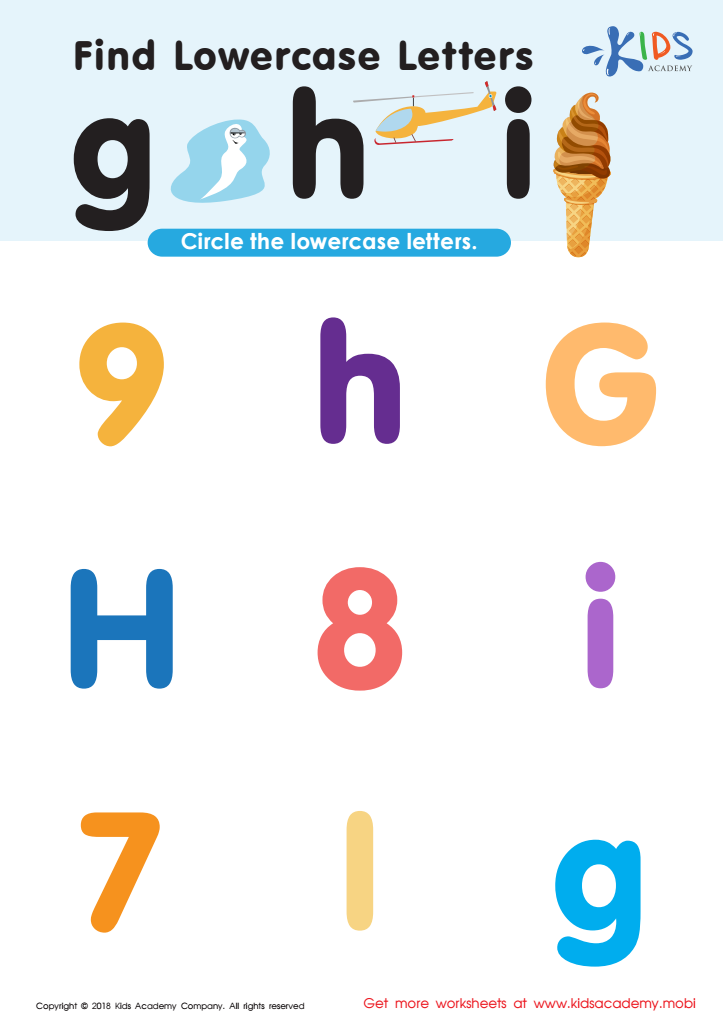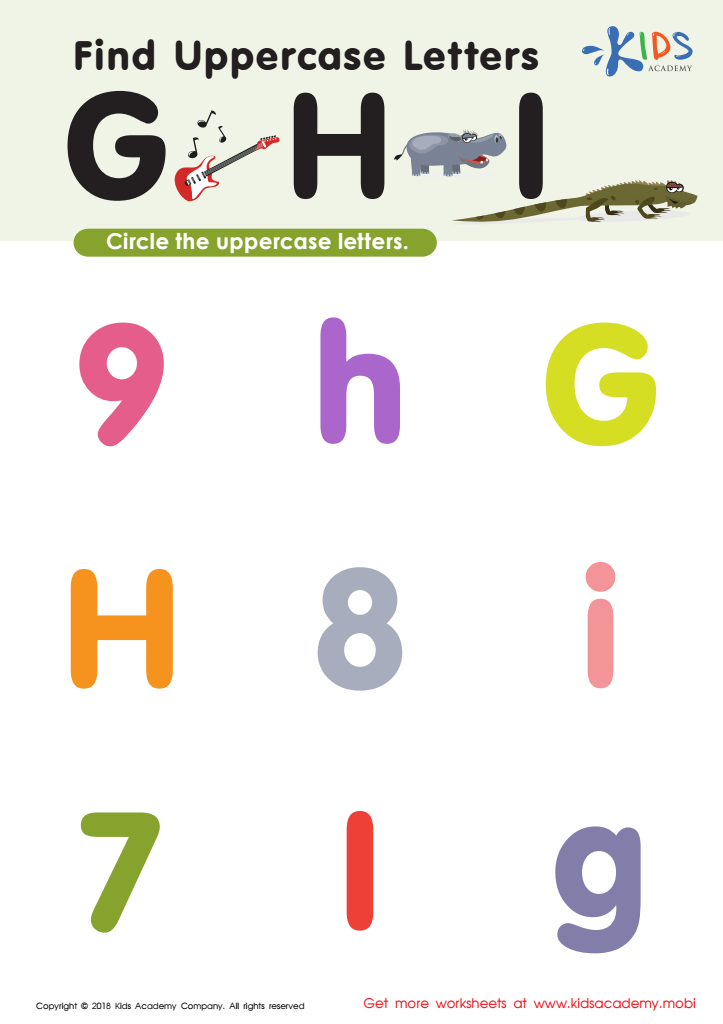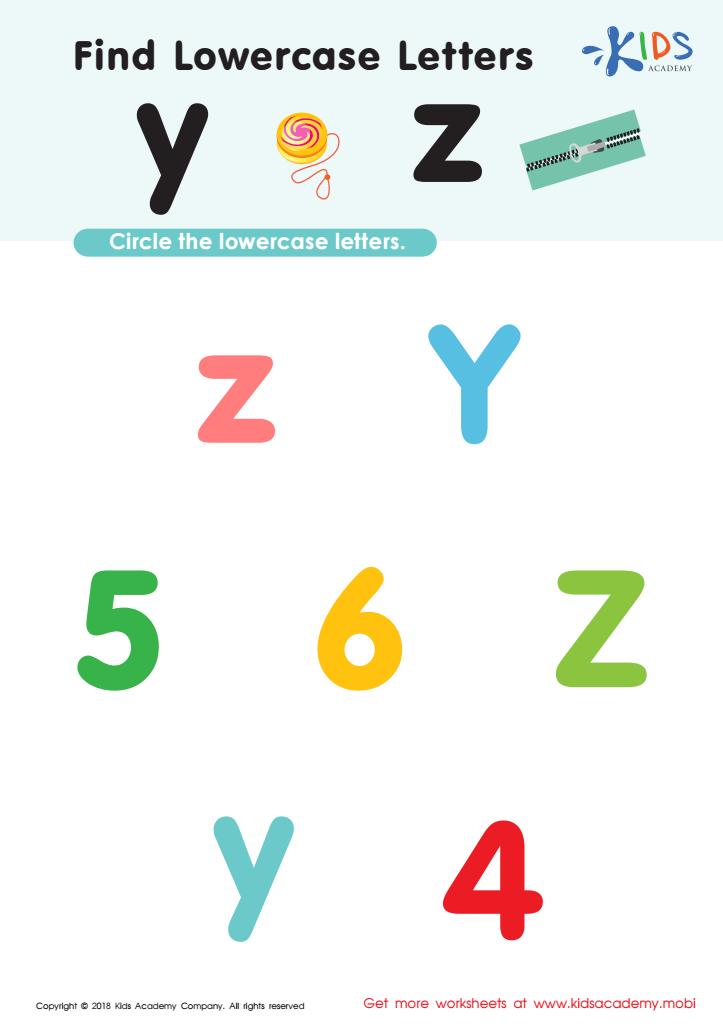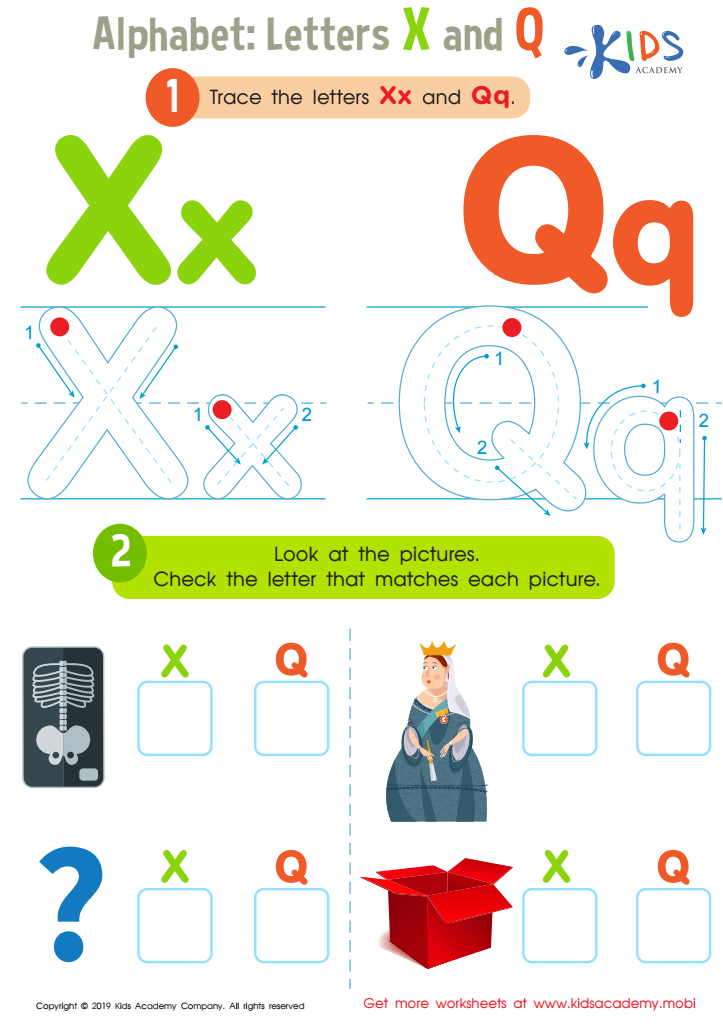Visual discrimination Alphabet Worksheets for Ages 5-9
5 filtered results
-
From - To
Discover the perfect tool to enhance your child’s visual discrimination skills with our Alphabet Worksheets designed for ages 5-9! Boost early learning and literacy as kids differentiate between similar letters through engaging, age-appropriate activities. These worksheets are expertly crafted to improve focus, attention to detail, and letter recognition, laying a solid foundation for reading and writing. Fun and interactive, they also promote critical thinking and fine motor skills. Dive into a world where learning meets excitement with our Visual Discrimination Alphabet Worksheets, and watch your child thrive academically and confidently! Perfect for home or classroom use.


Find Lowercase Letters g h i Worksheet


Find Uppercase Letters G, H, and I Worksheet


Find Lowercase Letters y z Worksheet


Letters X and Q Tracing Worksheet


Find Uppercase Letters V, W, X Worksheet
Visual discrimination is a crucial skill for children between the ages of 5 and 9, especially when learning the alphabet. This skill involves the ability to recognize similarities and differences in visual images, which is fundamental for early reading and writing.
At this age, children are beginning to understand that letters not only look different but also represent different sounds, which are essential for decoding words. Visual discrimination helps them distinguish between letters like "b" and "d" or "p" and "q," which can appear very similar but hold different meanings. Recognizing these distinctions quickly can aid in fluency, comprehension, and overall reading efficiency.
Parents and teachers should care about developing this skill because it builds a strong foundation for literacy. Children with strong visual discrimination skills tend to have fewer struggles with reading and spelling. Early literacy success can also boost a child’s confidence and interest in learning, fostering a positive attitude towards education overall.
Furthermore, visual discrimination is not isolated to reading; it is vital for everyday tasks and academic growth in subjects like math and art. Encouraging activities that strengthen this skill, such as matching games, puzzles, and letter sorting, can greatly enhance a child's cognitive development. In short, prioritizing visual discrimination skills benefits children’s overall educational journey.

 Assign to My Students
Assign to My Students













